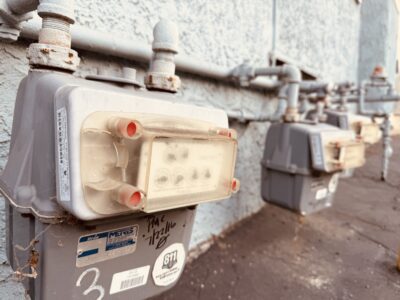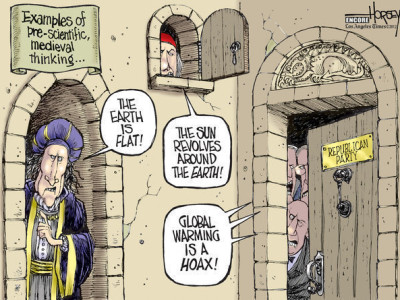The (VERY) Uneasy Case for Nuclear Power
 Anyone who is serious about combatting climate change must be serious about considering nuclear power. Fission generation produces virtually no emissions, and given the difficulties we will have in reducing the world’s carbon footprint, to ignore nuclear power is to my mind irresponsible.
Anyone who is serious about combatting climate change must be serious about considering nuclear power. Fission generation produces virtually no emissions, and given the difficulties we will have in reducing the world’s carbon footprint, to ignore nuclear power is to my mind irresponsible.
But “considering” nuclear power hardly means adopting it. Nuclear power plants are fabulously expensive to build, maintain, and keep safe. Moreover, the Achilles Heel of nuclear power has always been nuclear waste, which is not only potentially devastating on a variety of levels, but from a lifecycle point of view substantially reduces the emissions savings from it. These technical issues precede any reasoned attempts to deal with the issue from a policy standpoint.
That’s why it was good to see the latest issue of Foreign Affairs devote space for a useful article on the issue (sub. required), by Ernest Moniz, Physics Professor at MIT and director of the Institute’s Energy Initiative. Moniz’ article is titled “Why We Still Need Nuclear Power: Making Clean Energy Safe and Affordable”. That’s a misnomer: most of the article lays out in impressively balanced style, many of the formidable technical and financial difficulties as well as the potential benefits of relying on nuclear power as a potential wedge in fighting climate change. Its consideration of new generation nuclear technologies that require less up-front capital costs is particularly instructive, although as Moniz admits, it is very early and has not received serious testing. Read the whole thing.
But what about waste? That’s where the article gets maddeningly vague. Here is the money graf:
Washington must find an alternative to Yucca Mountain for storing nuclear waste in the long run. As it does so, it must adopt a more adaptive and flexible approach than it did last time, holding early negotiations with local communities, Native American tribes, and states. Sweden upgraded its waste disposal program with just such a consensus-based process, and for a dozen years the U.S. Department of Energy has operated a geological repository for transuranic waste near Carlsbad, New Mexico, with strong community support. The government should also investigate new approaches to disposal. For example, it might make sense to separate out the long-living transuranic elements in nuclear reactor waste, which constitute a nasty but very small package, and dispose of them in a miles-deep borehole, while placing the shorter-living materials in repositories closer to the surface. Given the sustained challenge of waste management, an overhaul to the existing program should include the establishment of a new federally chartered organization that is a step or two removed from the short-term political calculus.
That’s it? It’s not quite clear what this means, or really whether it means anything. Maybe the United States does not use a Swedish process because, well, it’s not Sweden. It’s a lot easier to build consensus in a smaller and more homogenous state. To be sure, sometimes good processes can build consensus, but we need to know a lot more before assuming that that is the case. What exactly happened in Carlsbad to make a nuclear waste depository, usually the mother of all LULUs, a good neighbor?
Then there is the vague word “nasty” to describe potentially catastrophic long-living transuranic nuclear waste buildups. How nasty is nasty? (Cue Janet Jackson). What do we know about these risks, how they can be mitigated, what their costs are, etc. etc. etc.? And a new federal bureaucracy insulated from politics to carry plans forward? That is so early 20th century, and in any event, good luck with that.
As I suggested above, I’m an agnostic on the issue, and I don’t think we can avoid balancing costs and risks when it comes to energy policy. To reject research on the matter seems self-defeating. But if that’s the best that advocates for nuclear energy can do, then they’ve got a very long way to go.
Reader Comments
8 Replies to “The (VERY) Uneasy Case for Nuclear Power”
Comments are closed.







I have never been a fan of nuclear energy. Far from it.
But I watched a couple of items about thorium (here’s “LFTR in 5 Minutes – THORIUM REMIX 2011“) and I had to think again. This is a different can of worms.
Maybe it’s a dog. I’m not expert. But maybe it can bridge us til we develop the alternatives, and get us away from the monstrosities we’re relying on now.
I have never been a fan of nuclear energy. Far from it.
But I watched a couple of items about thorium (here’s “LFTR in 5 Minutes – THORIUM REMIX 2011“) and I had to think again. This is a different can of worms.
Maybe it’s a dog. I’m not expert. But maybe it can bridge us til we develop the alternatives, and get us away from the monstrosities we’re relying on now.
It is a well known fact that over the last few years there have been significant discoveries of natural gas on American soil, due largely to advance techniques such as horizontal drilling. The future of electric power generation is low cost, clean burning natural gas.
It is a well known fact that over the last few years there have been significant discoveries of natural gas on American soil, due largely to advance techniques such as horizontal drilling. The future of electric power generation is low cost, clean burning natural gas.
Enough of this “careful” cost-benefit analysis. Nuclear power is dangerous in the production (remember the deaths of Navajo uranium miners), operation and disposal. Think Fukushima. Think Chernobyl (which, according to the most recent study that included Slavic sources – Yablokov’s 2009 book published by the New York Academy of Science – resulted in more than 900,00 premature deaths). We need a vision for a new energy world that addresses climate change, but does not rely on dangerous technologies. Come on, environmentalists, think bigger.
Enough of this “careful” cost-benefit analysis. Nuclear power is dangerous in the production (remember the deaths of Navajo uranium miners), operation and disposal. Think Fukushima. Think Chernobyl (which, according to the most recent study that included Slavic sources – Yablokov’s 2009 book published by the New York Academy of Science – resulted in more than 900,00 premature deaths). We need a vision for a new energy world that addresses climate change, but does not rely on dangerous technologies. Come on, environmentalists, think bigger.
It should be stressed that the report from the New York Academy of Sciences was initiated and effectively edited by Greenpeace. Chernobyl is probably the most investigated industrial accident in history but the NYAS report dismisses all other reports from the Red Cross, IAEA, UNSCEAR, and the World Health Organization, claiming they are in a conspiracy with the nuclear industry but provide no supporting evidence.
India has just announced they are building a thorium reactor that should be up and running by 2020. Thorium reactors cannot melt down, are massively cheaper than any other form of energy generation and produce less waste as well as it being practically impossible to make nuclear weapons from its byproducts.
Natural gas is the best of all the fossil fuels regarding green house gas emissions but still emits methane which traps heat 20 times more effectively than carbon dioxide and the price of natural gas is on the rise.
Annual waste from one reactor will fit into a pickup truck and the fuel from 50 years of reactor operation could fit in a single football field, amounting to 77,000 tons. We discard 179,000 tons of batteries per year and they contain toxic heavy metals. When solar panels are decommissioned after the average 25 year lifecycle they also must be disposed of in toxic dumps as they contain highly toxic metals, gases and solvents that are carcinogenic. Some of these toxic substances in solar panels will never decay, having a never ending life span.
It should be stressed that the report from the New York Academy of Sciences was initiated and effectively edited by Greenpeace. Chernobyl is probably the most investigated industrial accident in history but the NYAS report dismisses all other reports from the Red Cross, IAEA, UNSCEAR, and the World Health Organization, claiming they are in a conspiracy with the nuclear industry but provide no supporting evidence.
India has just announced they are building a thorium reactor that should be up and running by 2020. Thorium reactors cannot melt down, are massively cheaper than any other form of energy generation and produce less waste as well as it being practically impossible to make nuclear weapons from its byproducts.
Natural gas is the best of all the fossil fuels regarding green house gas emissions but still emits methane which traps heat 20 times more effectively than carbon dioxide and the price of natural gas is on the rise.
Annual waste from one reactor will fit into a pickup truck and the fuel from 50 years of reactor operation could fit in a single football field, amounting to 77,000 tons. We discard 179,000 tons of batteries per year and they contain toxic heavy metals. When solar panels are decommissioned after the average 25 year lifecycle they also must be disposed of in toxic dumps as they contain highly toxic metals, gases and solvents that are carcinogenic. Some of these toxic substances in solar panels will never decay, having a never ending life span.